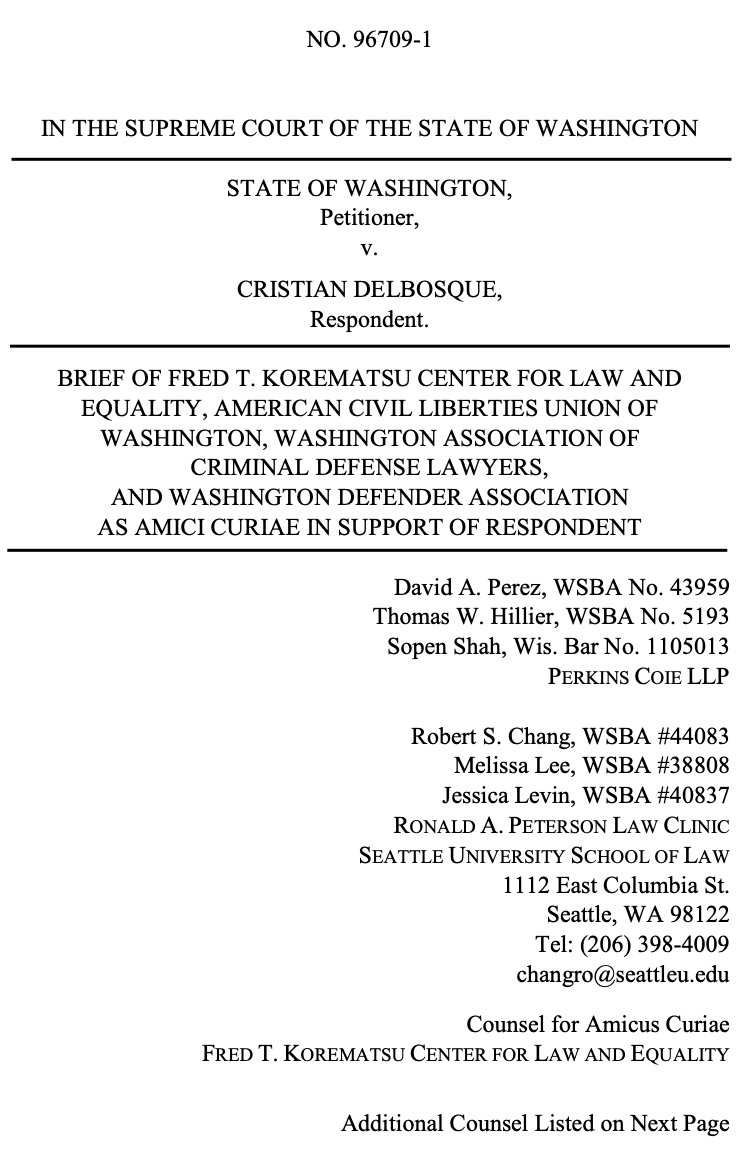
Summary of Argument
Although this Court in State v. Bassett, 192 Wn.2d 67, 428 P.3d 343 (2018), categorically eliminated mandatory life-without-parole sentences for juveniles, it did not address indeterminate sentences under RCW 10.95.030. Unless the child is under 16 when the offense is committed, the sentencing court remains free to set the minimum term of years at anywhere between 25 years to something short of life. What this upper limit (de facto life) is remains undecided. But regardless of the minimum term of years set by the sentencing court, because there is no guarantee of release once that minimum term is served, a child sentenced under RCW 10.95.030 may still die in prison.
When a sentencing court sets the minimum term, it must determine whether the child is “the rare juvenile offender” who is “irreparabl[y] corrupt[ ].” Miller v. Alabama, 567 U.S. 460, 480, 132 S. Ct. 2455, 183 L. Ed. 2d 407 (2012). Two problems immediately present themselves. First, how is the court to determine whether a child—who had the physiological and biological characteristics of youth at the time of the offense—does not have the capacity to change? Social science suggests that it is extremely difficult to identify “the rarest of children[ ] . . . whose crimes reflect irreparable corruption.” Montgomery v. Louisiana, 136 S. Ct. 718, 726, 193 L. Ed. 2d 599 (2016), as revised (Jan. 27, 2016). This situation presents an insurmountable risk of error.
Second, the juvenile bears the entire risk of any error the court might make. If the sentencing court believes that the child whom it is sentencing is capable of change, the sentencing court can set the minimum at 25 years. If the court gets it wrong and the child turns out to be one of the few who actually is incorrigible, the Indeterminate Sentence Review Board (ISRB) will have the facts before it and can prevent that person from being released. But if the court erroneously decides that the child is incorrigible and sets the minimum sentence at 48 years, the child has no reprieve. Although he could have been rehabilitated, he will never get a chance to be a productive member of society. A sentence of that length does not advance legitimate penological objectives. In addition, society misses out on someone who would have become a contributing member if given a meaningful opportunity for release.
This Court properly constrains sentencing courts’ discretion, based on the constitution, within the limits set by the legislature. See Bassett, 192 Wn.2d at 91. As detailed below, sentencing courts are only giving the minimum of 25 years when they have no discretion because the child was under 16 at the time of the offense; when courts have discretion, they are generally giving high-range minimum terms short of actual life—or what might be deemed de facto life—under the Miller-fix statute. These sentences ignore that the discretion sentencing courts exercise is in fact constrained by Graham v. Florida, 560 U.S. 48, 82, 130 S. Ct. 2011, 176 L. Ed. 2d 825 (2010), Miller, Montgomery, and by this Court’s extra protections given to juveniles under article I, section 14 of the Washington Constitution, see Bassett, 192 Wn.2d at 73.
This Court should acknowledge that the high risk of error and the asymmetric consequences of error require a sentencing court to set the minimum term at the statutory minimum unless the State, by clear and convincing evidence, establishes that a particular juvenile belongs in the category of those rare youth who are incorrigible. Anything else flies in the face of this Court’s jurisprudence that recognizes that children are different and that Washington’s Constitution gives greater protection to children, even when they are sentenced as adults.